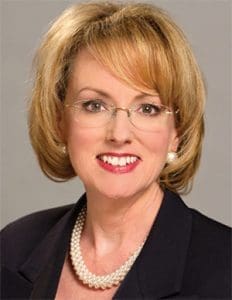What’s behind Magnet®-recognized organizations?
By Lillee Gelinas, MSN, RN, CPPS, FAAN
I’ve learned a lot through the years about the characteristics of healthcare organizations whose nursing excellence is evident, even palpable. As I sat in the 2016 American Nurses Credentialing Center (ANCC) National Magnet Conference® and connected with organizations that have earned their third, fourth, and fifth Magnet recognitions, my interest in nursing excellence sustainability grew even more. Fewer than 9% of all hospitals in the United States achieve Magnet recognition, and an even smaller number achieve it three or more times. Are they lucky? Is it just a fluke? I don’t think so.
Searching for answers
In my search for answers, I asked American Nurse Today editorial advisory board member Joe Potts, BSN, RN, for his perspective because we’re both Navy veterans who try to understand why disciplined organizations achieve more predictable outcomes. I was fascinated as he talked about his interest in the science of magnets in nature and the correlations to Magnet-recognized organizations, especially those with multiple recognitions.
If you think about Magnet-recognized organizations, or those on the journey, and then consider some interesting facts about magnets in nature, you might understand why some hospitals are fundamentally different from others.
Natural vs. artificial magnets
All magnets that occur in nature are permanent and will never lose their magnetic power. The strongest natural magnetic material is lodestone; it was used in the first compasses. Today, if you visit a gem and mineral show, you’ll find lodestones on display. Play with them and you’ll experience their magnetic strength.
Artificial magnets, like those you use on your refrigerator door, can be temporary or permanent. Temporary magnets aren’t always magnetic; their magnetism can be turned on at will. Permanent magnets, like natural magnets, never lose their strength.
The force that drives Magnet-recognized organizations
The journey to earn Magnet recognition from the ANCC may stretch out over several years, and the required narrative for the application must tell a powerful story. Not surprisingly, research shows that nurses at Magnet-recognized hospitals are significantly more engaged in their work than nurses at other hospitals. That’s an important point for patients, too, since the level of nursing engagement is a reliable predictor of mortality and complication rates.
In my conversation with Joe Potts on this topic, he noted that sustainable nursing excellence is the result of a long-term organizational strategy that builds a healthy culture around staff engagement and empowerment. You might even think of it as a strong, permanent magnet toward which staff are drawn.
Conversely, striving for Magnet recognition as part of a short-term marketing tactic could make it a potentially temporary magnet. Worse yet, though, is the scenario where organizations don’t even begin the journey.
Follow your lodestone
Could it be that hospitals with multiple recognitions, the 2%, are natural magnets? Perhaps their lodestone is their identifiable, sustainable culture that’s clearly integrated across the organization’s fabric.

Lillee Gelinas, MSN, RN, CPPS, FAAN
Editor-in-Chief
lgelinas@healthcommedia.com
Selected References
Aiken LH, Havens DS, Sloan DM. The Magnet Nursing Services Recognition Program: A comparison of two groups of Magnet hospitals. J Nurs Admin. 2009;39(suppl 7-8):S5-S14.
Blizzard R. Nurse engagement key to reducing medical errors. Gallup. December 27, 2005.
MaineHealth. MMC earns its third Magnet designation for nursing excellence. March 30, 2017.
Mayo Clinic. Mayo Clinic’s Minnesota campus awarded Magnet recognition® for fifth time. June 3, 2016.
Sentinel Watch, The. What are the forces of magnetism and why should you care about them? American Sentinel University. August 17, 2011.
Gelinas characteristics nursing excellence ant September journal




















1 Comment.
Would it be possible for me to have a pdf of the Characteristics of Nursing Excellence ?